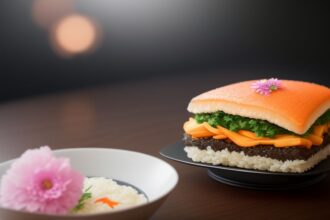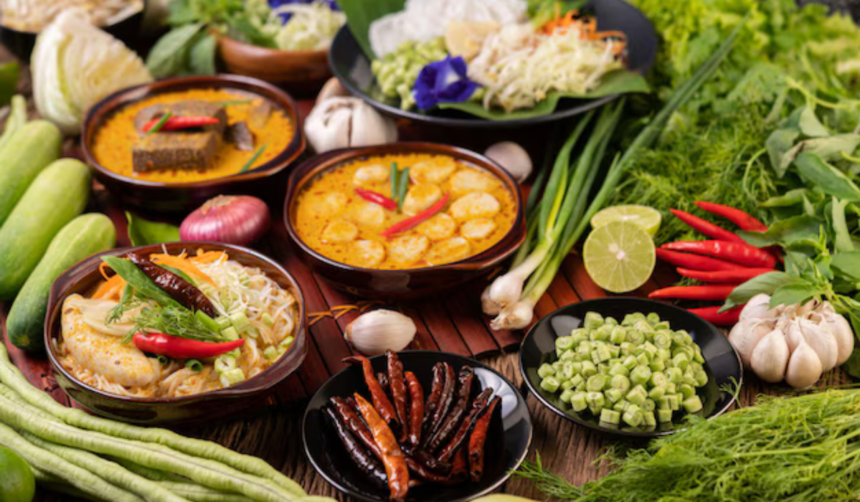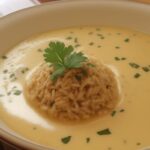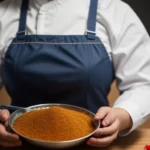Mouth-watering aromas waft through the air, as the bustling streets of Thailand are filled with the vibrant colors and flavorful spices of Thai cuisine. From the bustling markets to the plates of eager diners, Thai food is a culinary journey that takes you on a flavorful adventure like no other.
1. Introduction to Thai Food
Thai food is renowned for its exotic flavors, aromatic herbs, and bold spices that create a harmonious balance of sweet, sour, salty, and spicy. The cuisine is a reflection of Thailand’s diverse culture, geography, and history, drawing influences from neighboring countries such as China, India, and Malaysia.
2. The Influence of Thai Street Food
Street food plays an integral role in Thai cuisine, with vendors setting up stalls and carts along busy streets, offering a wide variety of dishes at affordable prices. From Pad Thai to Som Tum, Thai street food is a delicious and convenient way to sample authentic flavors on the go.
3. Exploring Thai Markets
Thai markets are a feast for the senses, with colorful stalls overflowing with fresh fruits, vegetables, herbs, and spices. The markets are a hub of activity, with vendors haggling over prices, shoppers browsing for the best deals, and chefs selecting the finest ingredients for their dishes.
4. The Traditional Thai Kitchen
In traditional Thai kitchens, cooking is a communal affair, with family members and friends coming together to prepare and enjoy meals. Thai cuisine emphasizes fresh and seasonal ingredients, with dishes featuring a wide array of herbs, spices, and sauces.
5. Essential Ingredients in Thai Cooking
From lemongrass and galangal to kaffir lime leaves and Thai chili peppers, Thai cuisine showcases an array of exotic ingredients that give dishes their signature flavors. Fish sauce, soy sauce, and coconut milk are also key components in many Thai recipes.
6. The Art of Thai Cooking
Thai cooking is a delicate balance of flavors, textures, and colors, with dishes often featuring a combination of sweet, sour, salty, and spicy elements. The art of Thai cooking lies in the careful preparation and presentation of dishes, as well as the use of fresh ingredients and traditional cooking techniques.
7. Popular Thai Dishes
Some of the most popular Thai dishes include Pad Thai, Tom Yum Goong, Green Curry, and Massaman Curry. These dishes showcase the diverse flavors and ingredients of Thai cuisine, with each dish offering a unique and delicious culinary experience.
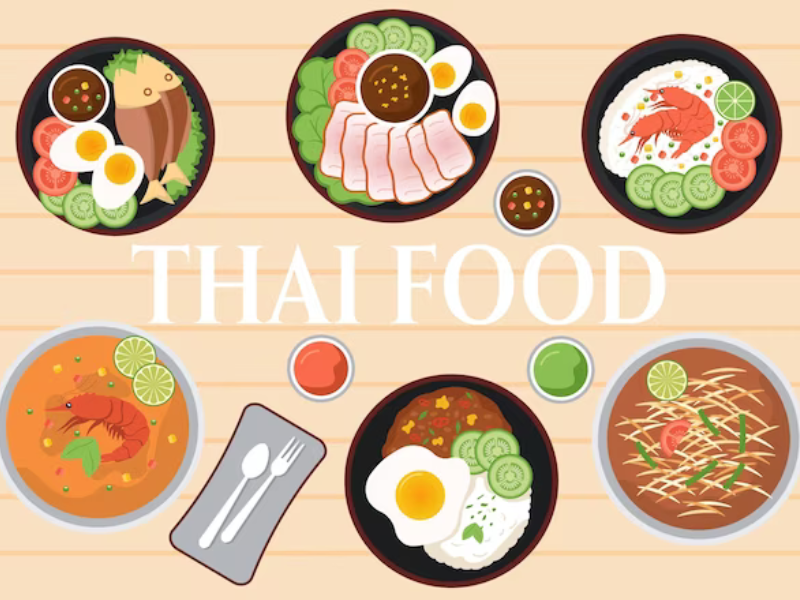
8. Regional Variations in Thai Cuisine
Thailand is a diverse country with distinct regions, each offering its own unique style of cooking and flavors. Northern Thai cuisine is known for its mild and earthy flavors, while Southern Thai cuisine is spicy and coconut-based. Central Thai cuisine features dishes with bold and aromatic flavors.
9. The Role of Street Vendors in Thai Culture
Street vendors are an integral part of Thai culture, offering affordable and delicious meals to locals and tourists alike. From bustling markets to quiet back alleys, street vendors serve as ambassadors of Thai cuisine, showcasing the vibrant flavors and culinary tradition of the country.
10. The Rise of Thai Restaurants
Thai restaurants have gained popularity around the world, with chefs and restaurateurs introducing diners to the diverse flavors and dishes of Thai cuisine. Many Thai restaurants offer a modern twist on traditional dishes, using local ingredients and innovative techniques to create unique and contemporary dishes.
11. The Art of Presentation
In Thai cuisine, the presentation of dishes is just as important as the flavors and ingredients. Thai chefs take pride in creating beautiful and intricate dishes that showcase the vibrant colors and textures of the ingredients. From carved fruit to garnished plates, the art of presentation is an important aspect of Thai cooking.
12. The Future of Thai Cuisine
As Thai cuisine continues to gain popularity around the world, the future of Thai cuisine looks bright and promising. With chefs and restaurateurs exploring new flavors and techniques, the culinary landscape of Thai cuisine is constantly evolving and adapting to the tastes and preferences of diners.
13. Conclusion
From the bustling markets to the plates of eager diners, Thai cuisine is a delicious and vibrant culinary journey that offers a taste of the exotic flavors and vibrant colors of Thailand. With its diverse influences, bold flavors, and innovative techniques, Thai food continues to captivate and inspire food lovers around the world.
14. References
– https://theculturetrip.com/asia/thailand/articles/these-are-the-13-best-thai-dishes-you-Must-try/
– https://www.tasteatlas.com/most-popular-thai-dishes
15. Further Reading
– Stanley, A. (2017). The Food of Thailand: A Journey for Food Lovers. London: Thames & Hudson.
– https://migrationology.com/thai-food-guide/
FAQs about “Inside the World of Thai Food: From Market to Plate”
- What makes “Inside the World of Thai Food: From Market to Plate” a valuable resource for those interested in Thai cuisine? This book offers an immersive journey into the world of Thai food, providing insights into the vibrant flavors, ingredients, cooking techniques, and cultural significance of Thai cuisine.
- Which aspects of Thai food are explored in this book? “Inside the World of Thai Food” explores various aspects of Thai food, including the ingredients commonly used in Thai cooking, traditional cooking methods, popular dishes, and the role of food in Thai culture and society.
- How does this book provide an insider’s perspective on Thai food? This book provides an insider’s perspective on Thai food by taking readers on a culinary tour from the bustling markets where fresh ingredients are sourced to the kitchens where they are transformed into delicious dishes, offering a behind-the-scenes look at the culinary process.
- Are specific Thai dishes and ingredients highlighted in this book? Yes, this book highlights specific Thai dishes and ingredients, showcasing a diverse range of flavors and culinary traditions from across Thailand, from street food favorites like pad Thai and som tam to regional specialties like khao soi and tom yum soup.
- Can readers expect to find practical tips and recipes for preparing Thai dishes at home from this book? Absolutely! “Inside the World of Thai Food” provides practical tips, cooking techniques, and authentic recipes for readers to recreate the flavors of Thailand in their own kitchens, empowering them to explore the rich and delicious world of Thai cuisine with confidence.
Advantages:
- Comprehensive Scope: “Inside the World of Thai Food: From Market to Plate” suggests a comprehensive exploration of Thai cuisine, covering not only the dishes themselves but also their ingredients, preparation methods, and cultural significance.
- Educational Value: The title promises to provide readers with insights into the entire process of Thai cooking, from sourcing ingredients at the market to preparing them on the plate, offering valuable knowledge about Thai culinary traditions and techniques.
- Cultural Immersion: By delving into the world of Thai food, the title immerses readers in Thai culture, allowing them to learn about the importance of food in Thai society, regional variations in Thai cuisine, and the role of ingredients in Thai cooking.
- Practical Guidance: As a guide to Thai food, the title serves a practical purpose for readers interested in cooking Thai dishes, providing them with guidance on ingredient selection, cooking methods, and recipe ideas.
- Inspiration for Culinary Exploration: The title may inspire readers to explore Thai cuisine further by visiting Thai markets, trying out new recipes, or dining at Thai restaurants, fostering a deeper appreciation for Thai food and culture.
Disadvantages:
- Potential Oversimplification: While the title promises to take readers from market to plate, it may oversimplify the complexity of Thai cuisine, overlooking nuances in ingredient sourcing, cooking techniques, and cultural contexts.
- Cultural Appropriation Concerns: Without proper context and sensitivity, focusing solely on the culinary aspects of Thai culture may risk cultural appropriation, particularly if the deeper cultural significance and history of Thai food are not adequately addressed.
- Accessibility Issues: Some Thai ingredients may be difficult to find outside of Thailand or specialty Asian markets, limiting the practicality of replicating authentic Thai dishes for readers in certain regions.
- Audience Limitation: The title may primarily appeal to readers with a specific interest in Thai cuisine or food culture, potentially excluding those who prefer other types of cuisine or are seeking a broader overview of global culinary traditions.
- Subjectivity: The content may be subjective, as the interpretation of Thai food and cooking methods can vary among different chefs, authors, or cultural perspectives, potentially leading to differing opinions on what constitutes authentic Thai cuisine.



